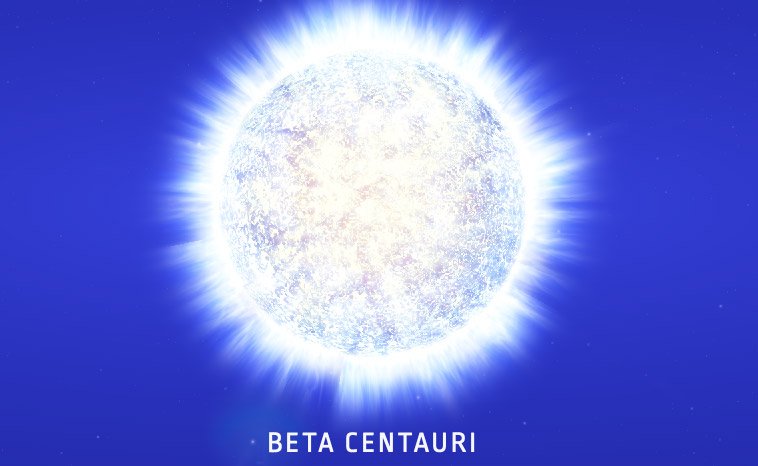Beta Centauri – Star Facts

Beta Centauri is made up of three stars and is the 10th brightest star in the night sky shining 15,500 times more than the Sun. In mythology, the culture of the Boorong people called this star (along with Alpha Centauri) Bermbermgle. They signified two brothers who were known for their courage for killing Tchingal ‘the Emu’ from the Coalsack Nebula.
Constellation Home
Beta Centauri is located approximately 348.83 light-years away in the constellation of Centauri. It is the 9th constellation in size out of the 88 and is home to three meteor showers; the Alpha Centaurids, the Omicron Centaurids and the Theta Centaurids. Centauri is also a part of the Hercules family of constellations.
Observation
This star can be seen in its home constellation located in the third quadrant of the Southern hemisphere, specifically between latitudes of +25 and -90 degrees. Because this star is bright it can be viewed by the naked eye by people in the Southern hemisphere and only briefly to those living from South Texas and certain parts of Florida. The best time to catch a glimpse of Hadar in the viewing areas is in early May. By nightfall in early June, this star will have reached its highest point.

Star Characteristics and Features
Hadar is a three-star system made up Beta Centauri A1, A2 and B. Beta Centauri A1 and A2 are giant stars that have moved away from the main sequence due to the burning up of all their core hydrogen. These two stars are almost identical in mass and orbit each other over a period of 357 days and are separated by only 4 astronomical units (approximately 600 million kilometers). Beta Centauri B is a B1 dwarf star that orbits the other two at a distance of 0.6 light-years over a period of 1,500 years.
Brightness of the Star
Beta Centauri is the 10th brightest star in the night sky with an apparent magnitude of 0.6. It shines approximately 15,500 times that of the Sun and has an effective temperature of 22,500 Kelvins or degrees 40,040 Fahrenheit (22,226 degrees Celsius). Beta Centauri B has an apparent magnitude of 3.7.
History and Mythology
Hadar in the Southern hemisphere is the inner star of the two “Pointers” directing the way to the Southern Cross. This is done by drawing a line from Alpha Centauri, through Hadar which leads a few degrees from the top of the cross where Gacrux is located. By using this star (Gacrux) navigators are able to draw a line to Acrux to determine due south. In mythology the culture of the Boorong people (northwestern Victoria) called this star (along with Alpha Centauri) Bermbermgle. They signified two brothers who were known for their courage for killing Tchingal “the Emu” from the Coalsack Nebula.
Beta Centauri is not just another twinkling celestial object, it has some cold hard facts and true significance. So if you have a chance to view this “ground/knee” star be sure to check it out.
